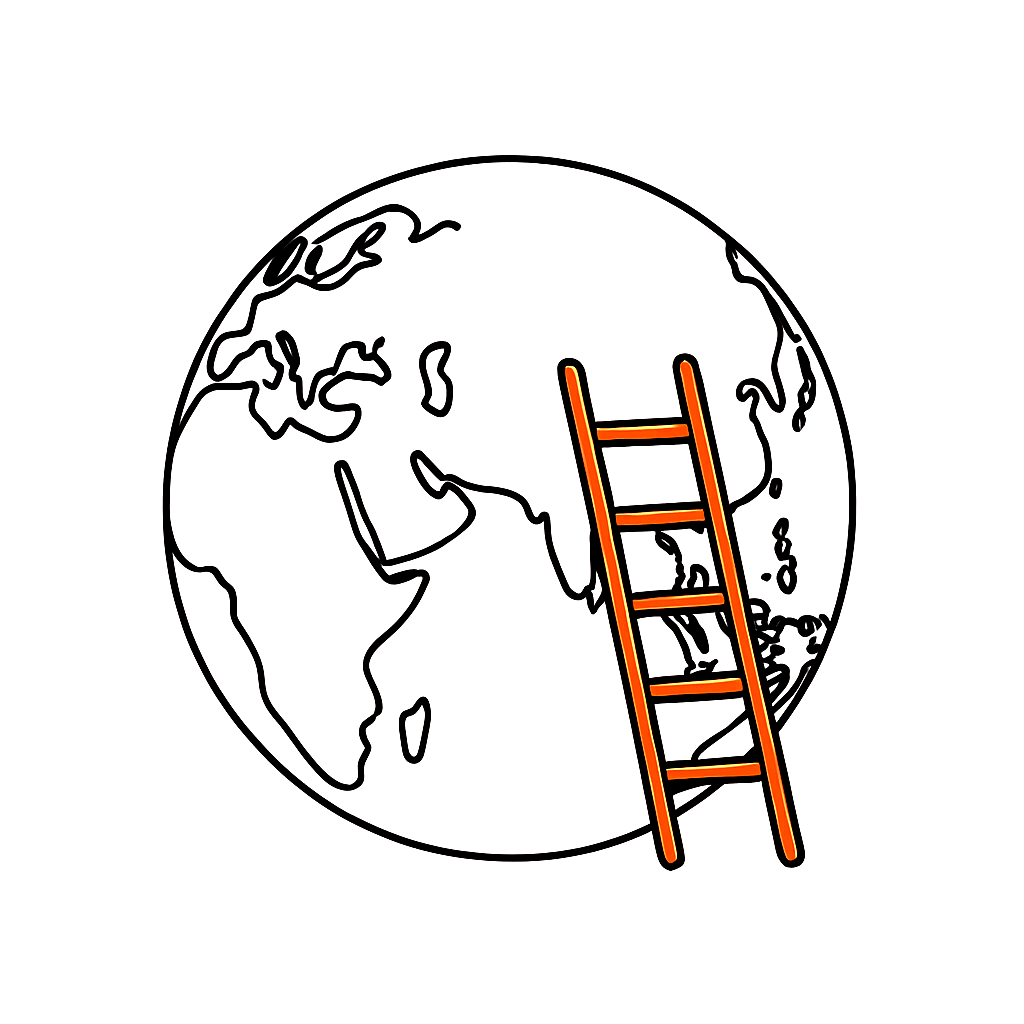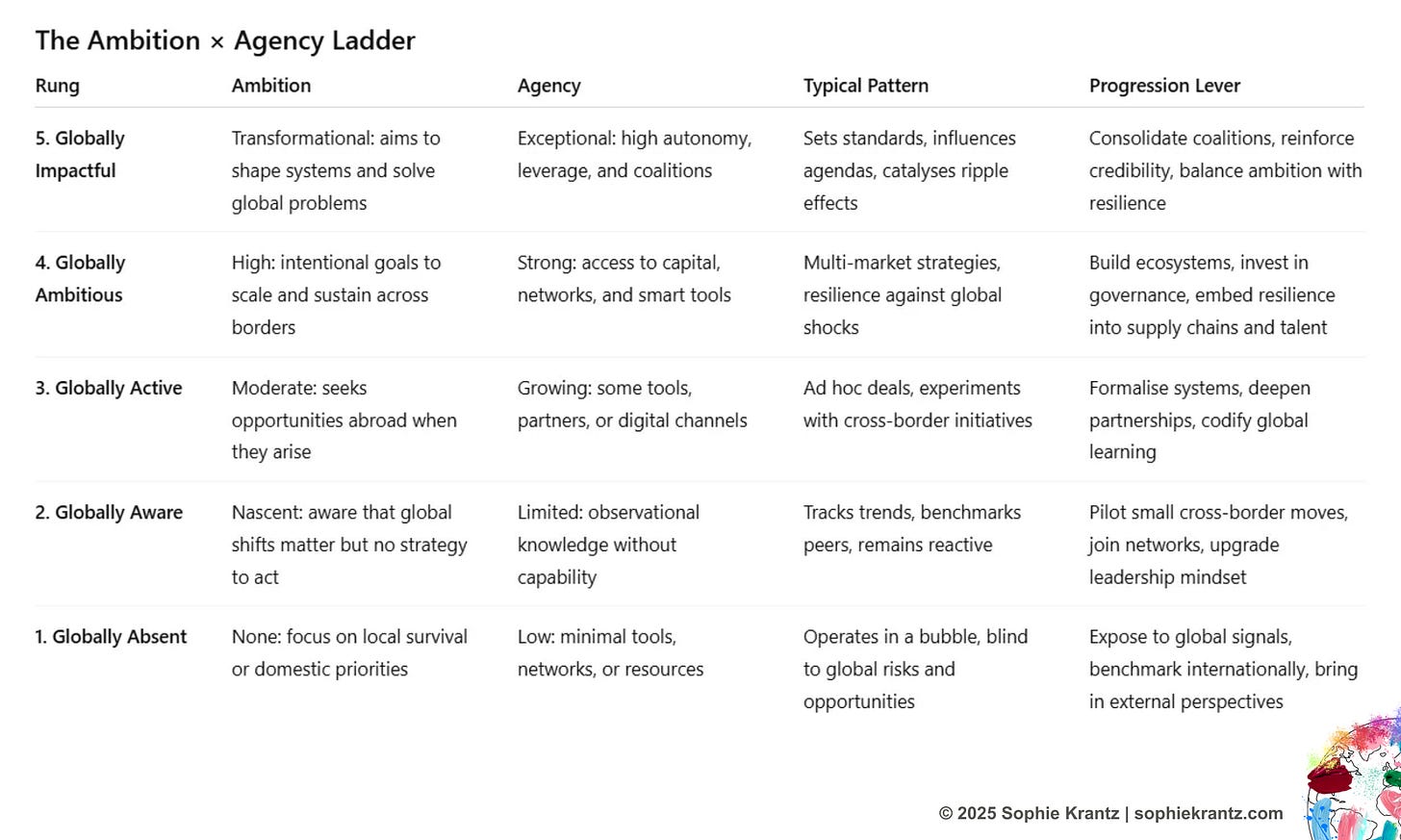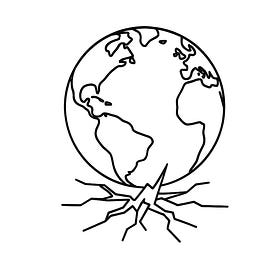This Ladder Has an Expiry Date
If your wins feel fragile, it’s time to rethink your path - and build what lasts.
A few years ago, I jumped off the ladder. The safe, known ladder. The one that promised status, certainty, and steady progress. Yet it wasn’t heading where I wanted to go.
The higher I climbed, the narrower it felt. Each step was about defending position, not expanding vision. It rewarded predictability, not adaptability. And while it looked solid inside the organisation, it didn’t prepare me - or those around me - for what was happening in the world beyond.
On the Wrong Ladder?
You know you’re on the wrong ladder when progress feels real inside your organisation or industry, yet fragile or hollow when tested against the wider world.
Some tell-tale signs:
Success is only local. Wins are measured by beating peers at home, not by relevance across borders. Global comparisons never enter the conversation.
Ambition outpaces capacity. You talk about global goals, yet lack the networks, systems, or partners to act. The rhetoric is bigger than the reach.
Capacity sits idle. You have tools, people, or resources that could scale, yet limited ambition or direction to take them beyond the familiar.
It feels zero-sum. Every promotion, deal, or decision is framed as a win for you and a loss for someone else. Collaboration shrinks instead of multiplying.
Blind spots dominate. Crises arrive from outside your frame - geopolitical shifts, digital disruption, climate shocks - and you’re caught off guard.
Impact stalls. You’re climbing higher inside a hierarchy, yet are not shaping outcomes that measurably matter for your customers, partners, or society.
Uncertainty creeps in. Each round of redundancies or client contraction leaves you questioning your relevance - and whether sharper competitors, or smarter tools and technologies, will overtake you.
When these signals show up, the problem relates to direction. You’re climbing, however the ladder itself is leaning against the wrong wall.
A Different Path to Progress
Since then, I’ve been on another ladder - not climbing it alone, but alongside others.
This ladder doesn’t rise in a straight line. It expands. Each rung isn’t a job title or a corner office, but a step towards broader ambition and stronger agency. On it, success isn’t measured by scarcity - who you beat inside your organisation or industry - yet by the value you create across boundaries.
On the early rungs, you grow through connection: building networks that cross industries, geographies, and perspectives. With each step, ambition stretches further and agency deepens - new tools, partners, and knowledge making bigger goals possible.
Higher up, leadership itself changes shape. It’s no longer about control or competition, but about collaboration and orchestration. It’s about creating win-wins that strengthen your business while also delivering outcomes for partners, customers, and society.
This is the Ambition × Agency Ladder. It’s not a solo climb to the top. It’s a collective journey, where progress multiplies as leaders move together. And it’s an easy ladder to join. The only entry ticket is a willingness to see beyond the immediate and act with intent. For a time, both ladders can be climbed in parallel - the familiar one for security, the new one for future relevance - until the moment comes to jump. Getting on the right ladder matters for leaders wanting to move beyond the status quo. Its time is now.
Why Now?
Ambition is rising faster than ever. Leaders are no longer insulated from the wider world. Digital platforms, global peers, and visible cross-border problems mean every decision is made in full view of global comparisons. What once took years of gradual exposure - travel, conferences, slow expansion - now happens instantly. This visibility fuels ambition to act bigger, sooner.
Agency is also more accessible. The means to act - once reserved for the biggest firms or governments - are now widely available. Digital infrastructure, AI, global networks, and capital flows reduce barriers that used to take decades to overcome. Small teams can operate with global reach. Partnerships, platforms, and ecosystems let leaders borrow scale rather than build it all themselves.
And the context has changed. The polycrisis - a convergence of economic shocks, climate risks, geopolitical tensions, and technological disruption - demands leaders who can operate beyond narrow silos. Old ladders built on hierarchy and internal competition leave organisations flat-footed when multiple crises collide. Ambition and agency are not longer optional qualities; they are survival skills. Leaders must see further and act faster to hold their footing, let alone shape outcomes that matter.
Together, ambition and agency are compressing the climb. What previously required slow, incremental evolution can now happen in compressed cycles. Leaders and firms that align ambition with agency can move further, faster - delivering impact that endures in a polycrisis world.
How the Framework Works
Each rung combines ambition - the intent to play bigger - with agency - the capacity to act with impact. The further up you go, the more leaders and firms shift from narrow, zero-sum competition to positive-sum outcomes that strengthen business results and create wider value. The table below shows what each stage looks like in practice, how to recognise it, and the levers to move higher.
Where are You Standing?
Take a moment to reflect:
Do my wins mainly come from outperforming peers at home, or from creating value that extends across borders, partners, and communities?
Am I tuned into global signals - systemic risks, new technologies, shifting regulations - or only what happens inside my national border or industry?
Do I have the networks and partners to act on ambitious goals that go beyond the status quo, or is capacity stuck in conversation?
When disruption strikes, do I scramble and react, or do I have the agency to adapt and mobilise others quickly?
Does my leadership multiply impact - for my team, my organisation, and society - or does it mainly defend position?
If your answers lean towards the local, the limited, or the reactive, you may still climbing the old ladder. If they point towards connection, adaptability, and positive-sum wins, you’re already on the Ambition × Agency Ladder.
The Pull of the Familiar
Getting off the old ladder is a psychological decision as well as a strategic one. Behavioural economists Samuelson & Zeckhauser (1988) call it status quo bias: our tendency to stick with the familiar, even when better alternatives exist.
The known ladder feels safe because it’s predictable, visible, and socially reinforced. Loss aversion makes the risk of stepping off loom larger than the potential gains of a new climb. Organisations, and leaders, often double down on what has worked before, rewarding precedent over innovation or relevant risk-taking.
This is why leaders keep climbing even when the ladder is leaning against the wrong wall. The bias doesn’t mean the old path is best - it shows how powerful inertia can be. Recognising it is the first step toward choosing a trajectory that matches the world we’re actually in.
Going Further, Faster, Together
The Ambition × Agency Ladder matters because it aligns ambition - the intent to play bigger - with agency - the capacity to act with impact. Leaders and firms that combine both climb faster and further, delivering stronger business results while shaping outcomes that endure.
Each rung represents both an opportunity and a responsibility: to see further, act with greater capacity, and create value that extends beyond the immediate.
When we see more, we can move smarter. And when we move smarter, we can achieve impact that lasts.
Over the coming weeks, I’ll share what I’ve learnt about how leaders climb the Ambition × Agency Ladder - and why it sets the trajectory to achieve scale, resilience, and relevance in the years ahead. We’ll look at leaders from around the world who are leveraging global forces to secure positive-sum outcomes.
This won’t be theory. It will be actionable and practical. You’ll see where you are, where you want to be, and how to take the next step - even with limited time, resources, or investment.
Many external forces won’t change in the next year or two. Yet our own trajectory can. And with it, we strengthen the results we deliver for our organisations and the wider impact we make in the world.
Getting off the old ladder isn’t easy. But on this one, we go further, faster, together.
Freedom Before Fracture
Early in my career, a manager told me I “had no scope for promotion.” I wanted to cut ties and move on.
Years later, while working abroad, a senior executive said my Australian accent made me sound uncertain - specifically, the upward inflection at the end of our sentences. I thought, get me out of here now.
And when I was told to stop asking questions - while trying to understand how to secure a win-win deal with China - and instead to simply tell our prospective partners what we wanted, I knew I didn’t belong in that room.
When have you felt tethered - restricted, controlled? When have you been the one to reinforce the tether?
In a world of shifts, these questions can be uncomfortable. Yet they may be more important to consider than waiting for ties to be cut by external forces.
When is it Safest to Stick with the Status Quo?
Sometimes, it is safest to stick to the status quo.
Leaders and organisations can’t afford to change constantly - that would add cost, confusion, and complexity. The challenge is knowing when to update how we see the world and how we act within it.
In Untethered: Strategy Workshops on the Water, we explore the forces that keep leaders, entrepreneurs, and organisations tethered to the status quo - systems, worldviews, and assumptions that once made sense, yet may no longer serve in today’s context.
Not every system needs a reset. Yet, some assumptions do.
Untethering does not focus on chasing change.It’s about recognising when the world has already changed and prioritising global shifts to shape what you focus on and do next.
We explore: When do you lift anchor and, with the right signals, set a course toward something more aligned and strategic?






Really interesting framework. Wondering where followers and members of your community currently stands. Maybe it worth a session to share ideas + needs + learnings?